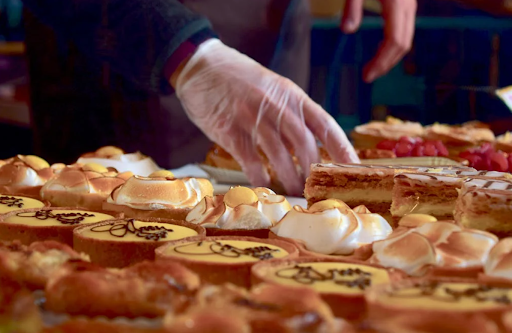For passionate bakers, opening your own bakery is always a dream. But where do you start? This article shares with you five key steps to help new bakery owners build a successful baking business in today’s competitive market. Scroll down to get all the tips for the 2025 baking business.
Step 1: Find Your Market and Stand Out
To succeed in 2025, your cake business needs more than great flavor—you need the right focus.
Understand the Trends
Plant-based cakes, gluten-free treats, and custom designs are still growing fast. People also want cakes for special events: birthdays, weddings, and even corporate gifts. Look at what’s trending in your area with tools like Google Trends or Instagram.
Know Your Customers
Are you targeting local coffee shops, birthday parties, or takeout-only dessert lovers? Many small U.S. bakeries serve niche markets like bubble tea shops, ramen spots, or fast-casual sandwich stores. Think about where your cakes could fit in.
Pro tip: Don’t try to be everything to everyone. It’s smarter to focus on one thing and do it really well.
Step 2: Take Care of Legal Basics
Before selling your first slice, make sure your business is legal.
- Register your business as an LLC or sole proprietorship.
- Get required licenses like a food handling permit or cottage food license.
- Pass health inspections if you use a commercial kitchen.
- Buy insurance to protect yourself and your customers.
Check your state’s cottage food laws—some allow you to bake from home, while others may require a separate kitchen. Sites like LegalZoom can speed up this process.
Step 3: Plan Your Products and Packaging
You’ll need more than ingredients to run a real cake business.
Stock the Right Equipment
Even a home-based cake business should invest in a solid mixer, a reliable oven, and good storage. These tools pay off in the long run with better quality and less waste.
Don’t Ignore Packaging
This part is often overlooked—but it matters. In 2025, cakes often get delivered or picked up. Your food package should be clean, secure, and reflect your brand. Here’s where many small food businesses hit a wall.
In the U.S., the packaging industry is dominated by large manufacturers. That means:
- High minimum order quantities — Small cake businesses often can’t meet them.
- Expensive design services — Custom packaging design takes time and money.
- No storage space — Small bakeries usually can’t store thousands of boxes.
That’s why many small restaurants and cake shops choose Fusenpack packaging. It offers lower minimum order quantities than other suppliers, free design and two types of warehouse management services
Step 4: Build Your Brand and Sell Smart
Now that you’ve got your product, it’s time to get the word out.
Go Online First
Start with a free Instagram or TikTok account. Show off your designs, share behind-the-scenes videos, and interact with local food lovers. You don’t need a fancy website to start, but a basic online order form helps.
Offer Delivery or Pickup
Think about how you’ll get your cakes to customers. Many people want easy takeout or delivery, especially for birthdays and parties. Partner with delivery platforms, or set up your own drop-off system.
Brand Your Experience
From your cake box to your thank-you note, every detail matters. Custom packaging can create a memorable unboxing moment that turns one-time buyers into repeat customers.
Step 5: Manage Your Money and Plan to Grow
Starting small doesn’t mean staying small. Keep track of your money from the start.
Set a Budget
Know your costs—ingredients, packaging, delivery, marketing, rent (if any), and labor. Start lean, but don’t underprice your work.
Know Your Profit
Use a simple spreadsheet or free tools to track your revenue and costs. As a guide:
- 30% of your price should cover ingredients and packaging
- 30% covers labor and overhead
- 40% should be your profit margin
Plan Ahead
Do you want to add cupcakes later? Offer cake classes? Sell online nationwide? Build those ideas into your plan early.
Final Thoughts
Starting a cake business in 2025 isn’t just about baking. It’s about building a full experience—from how your cakes look online to how they’re delivered to the customer’s door.
Don’t underestimate the power of smart packaging—especially if you’re delivering. And remember: you don’t need to go big from day one. Start small, stay consistent, and use tools to make your cake business look as professional as it tastes.
